What are some things to do in Quedlinburg, Germany during your visit? Quedlinburg is a beautifully preserved medieval town situated on the north-eastern edge of the Harz Mountains in the state of Saxony-Anhalt, Germany and it dates back over a millennium!
The old town is a maze of Romanesque half-timbered houses featuring a castle, churches, gardens, squares and winding alleys where one could happily get lost for hours. Picturesque doesn’t even begin to do it justice.
Quedlinburg is also one of the stops on Germany’s Romanesque Road, a scenic route in the German state of Saxony-Anhalt that links village churches, monasteries, cathedrals and castles that were built between 950 and 1250. These represent the emergence of Christianity in this part of Germany, making it another reason to visit.
So without further ado, today we’re sharing some best things to do in Quedlinburg during your visit to this charming medieval town!
Things to Do, See, Eat, Drink & Experience in Quedlinburg, Germany
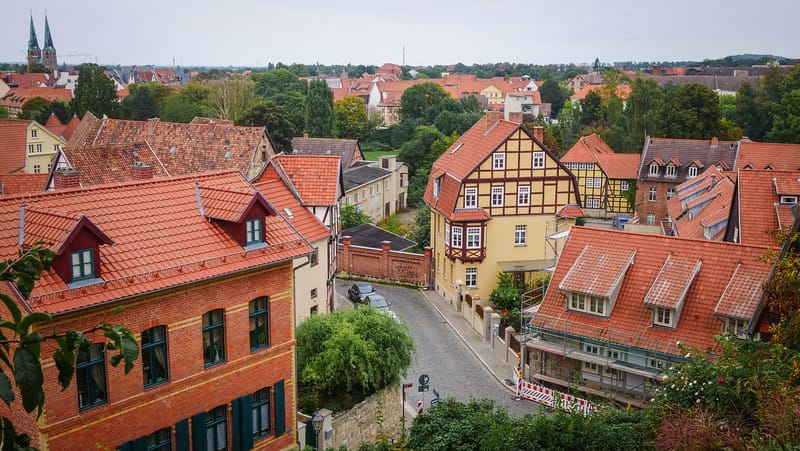
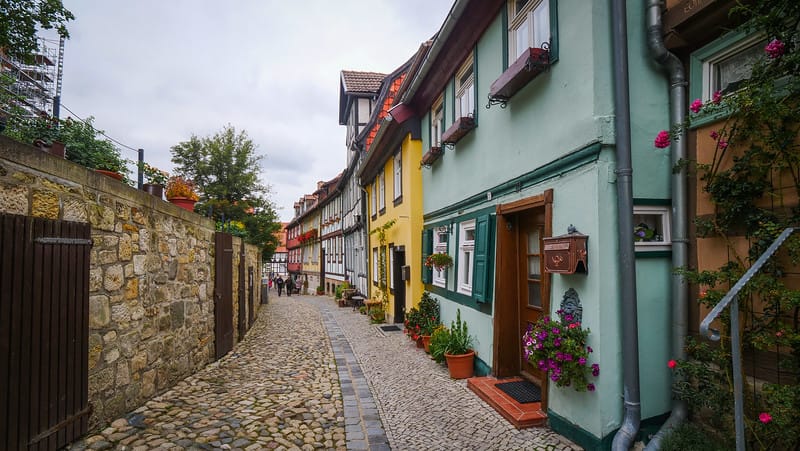
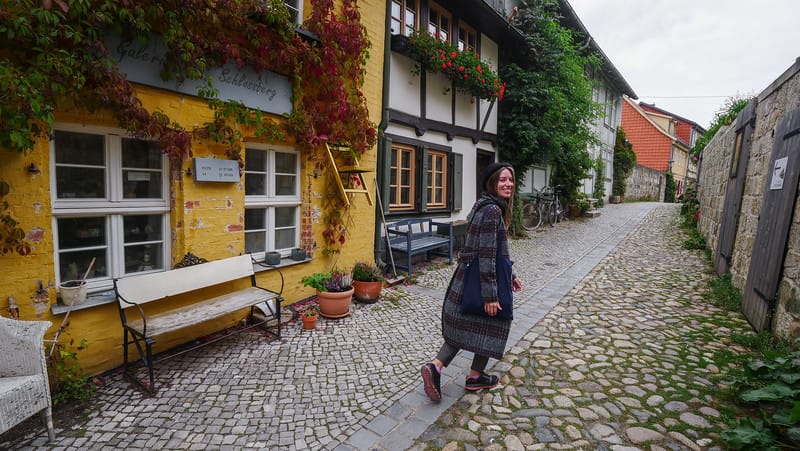
Quedlinburg Castle and Collegiate Church of St Servatius
The main attraction in Quedlinburg is, of course, Quedlinburg Castle, a medieval fortified abbey fortress that sits on a hill known as Schlossberg or ‘castle mountain’.
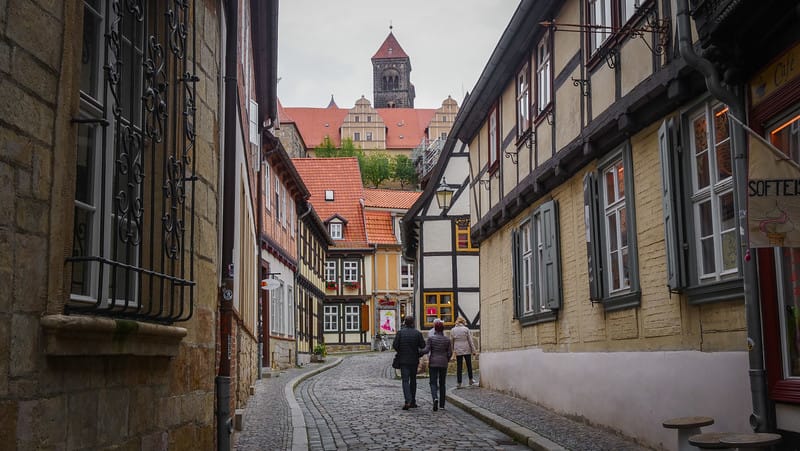
Within the complex, you also have the Collegiate Church of St Servatius. This church was dedicated in the year 1129, though it was preceded by earlier structures. It was one of the most highly regarded churches of the Empire during the Middle Ages.
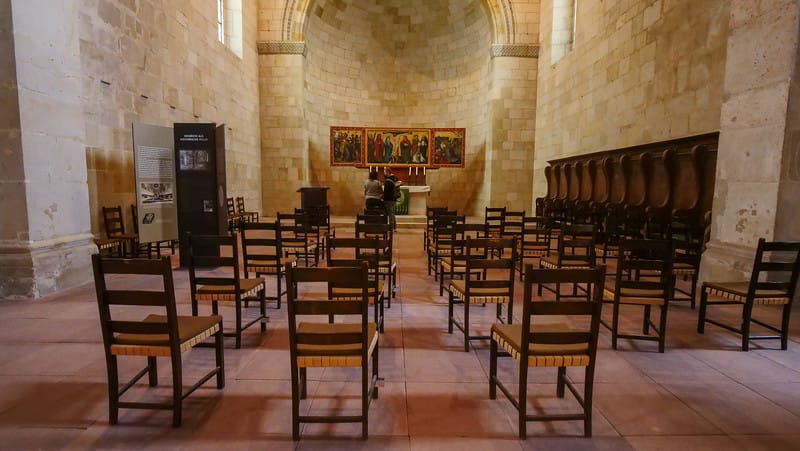
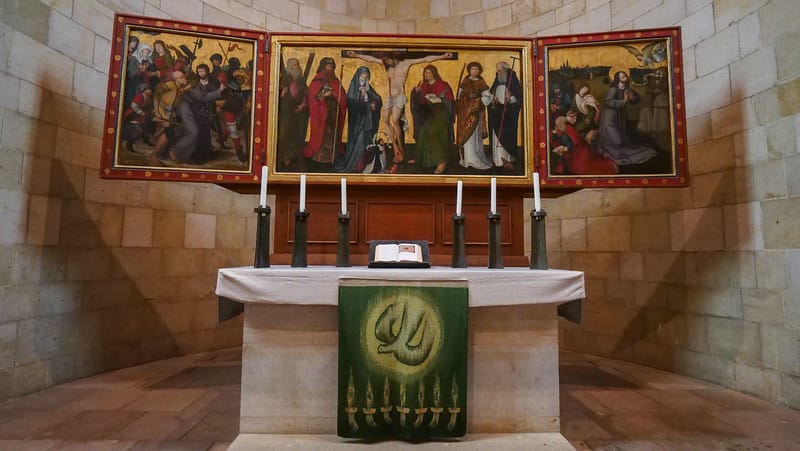
In the crypt beneath the choir, you’ll find the royal graves of Henry the 1st and his wife Mathilde. King Henry the Fowler (also known as King Heinrich I) ruled during the early 10th century and is credited with being the founder of medieval Germany and is considered the first German King,
Lastly, the Schlossgarten or ‘castle garden’ offers a nice vantage point over the city. It’s red rooftops and church steeples as far as the eye can see – the quintessential medieval town!
Together, the aforementioned church, castle and old town are UNESCO World Heritage Sites thanks to their outstanding example of a European town with medieval foundations and preserved timber-framed buildings.
Guided Walking Tour
In the morning we joined a guided walking tour to learn about the town’s unique architecture. If you enjoy doing walking tours when you first arrive in a new destination, consider this Quedlinburg walking tour or for something a bit more unconventional this evening walking tour where a night watchman takes you down medieval streets recounting tales from another time.
Quedlinburg happens to be Germany’s largest half-timbered town, with more than 1,300 timber-frame houses, and the cool thing is that you can walk around and see how this style evolved over the centuries.
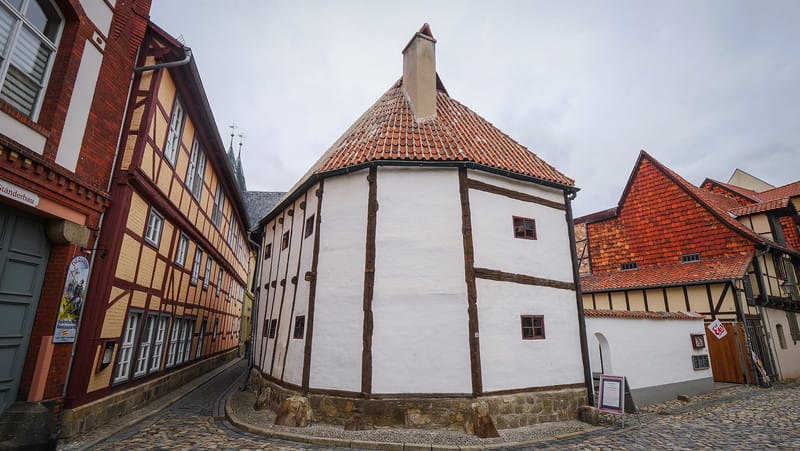
One of the places we visited was the Timbered Museum that dates back to the 14th century and shows a very early example of this type of construction.
Here you can see an individual vertical beam from the ground all the way up to the roof, which meant the height of the framed houses was limited to the tallest trees that could be found.
Inside the museum’s courtyard, you can see examples of how timbered buildings were constructed – frames, walls and all.
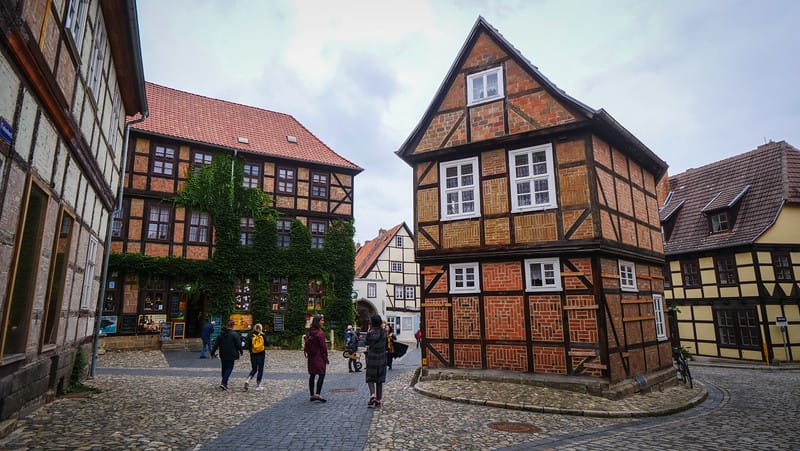
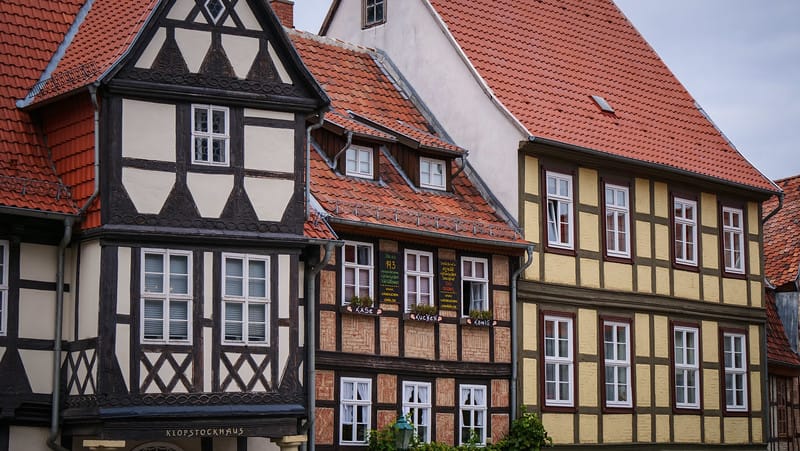
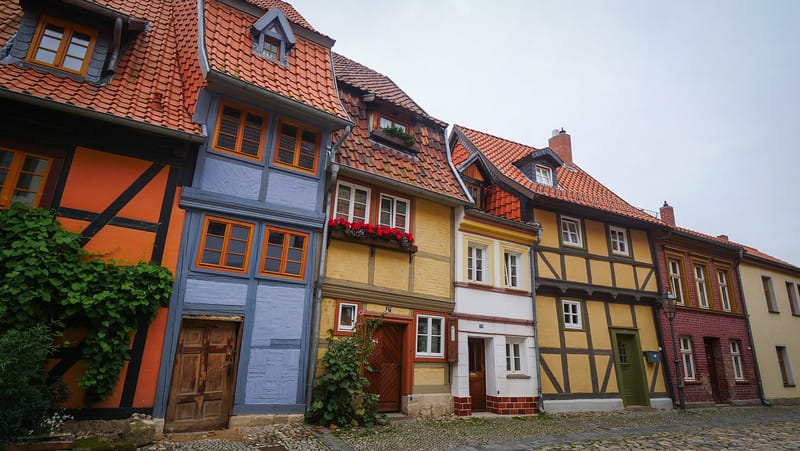
We then continued our walk through town for more examples of how the half-timbered construction style evolved to have multiple protruding levels, and more elaborate design elements.
This town has some of the most interesting architecture we’ve seen, so if you’re into that sort of thing, it’s well worth joining a guided tour because you learn about all the little details that would otherwise go unnoticed.
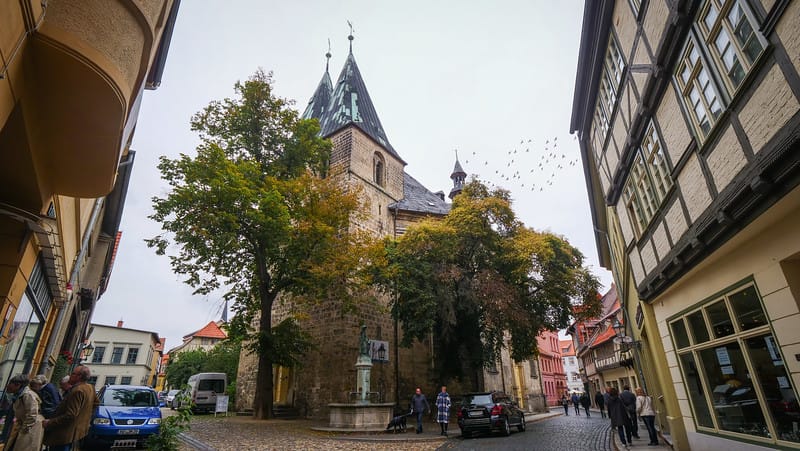
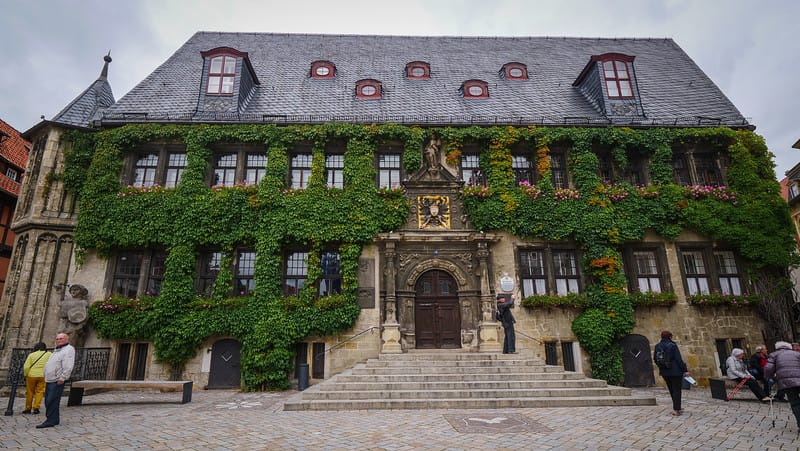
Lunch at Hotel zum Bär
We had a hard time finding a restaurant that was open, but eventually stumbled upon Hotel zum Bär which is located in Market Square.
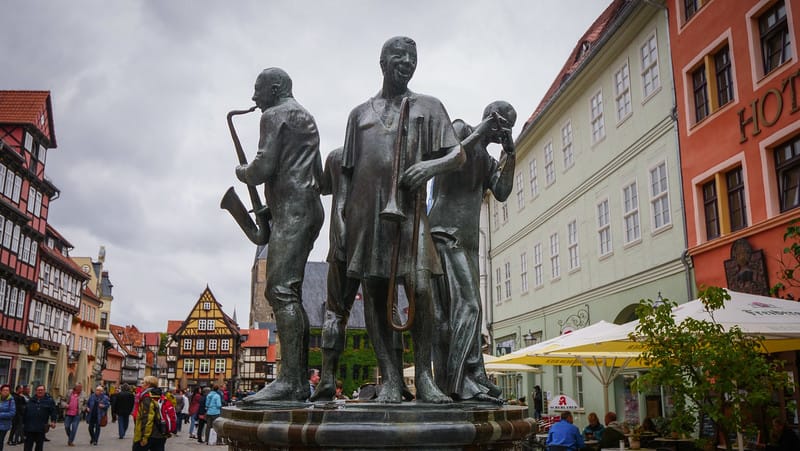
It was a very cool autumn day, so we were craving hearty dishes and big portions, and this restaurant delivered on both fronts.
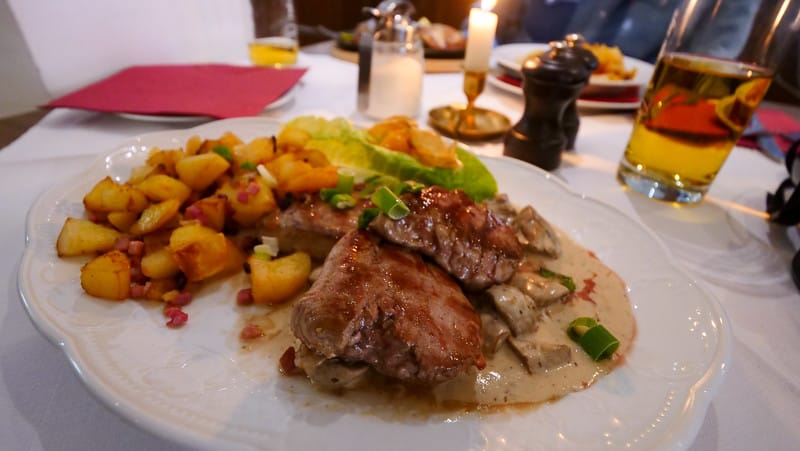
I got the pork medallions served in a creamy mushroom sauce with a side of fried potatoes and bacon.
Meanwhile, Sam ordered the ‘Bear Platter’ (there was no bear meat, it was just a bear-sized portion!) featuring chicken, pork and beef on a bed of green beans with a side of potatoes and bacon.
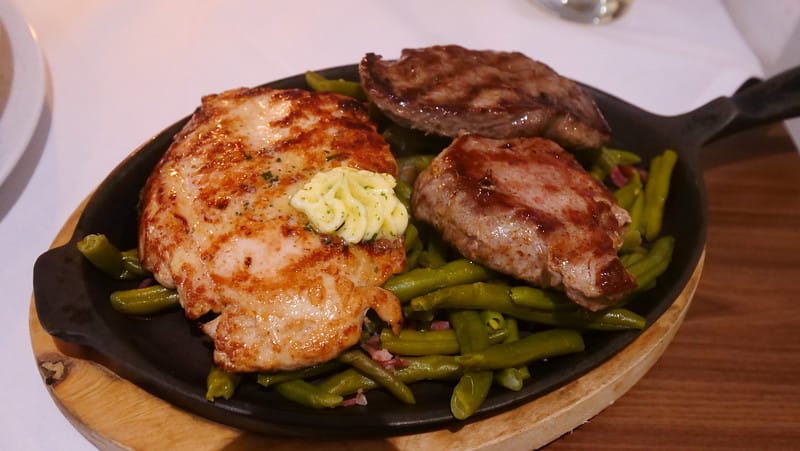
We really enjoyed both meals and left feeling beyond satisfied.
Museum Lyonel Feininger
In the afternoon, we visited the Museum Lyonel Feininger, which bears the name of the German-American artist Lyonel Feininger.
Feininger was born in New York City but travelled to Germany at age 16 to study art. He was a leader in the Expressionist movement and worked as a painter, caricaturist and comic strip artist. He then went on to produce a large body of photographic works later in his career.
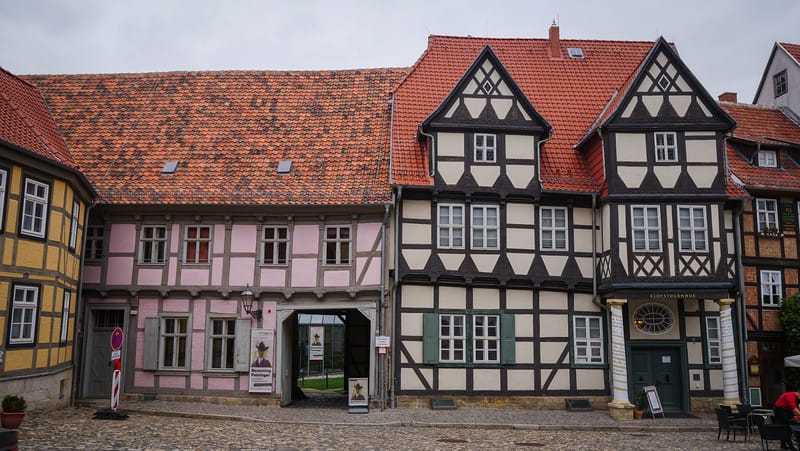

The museum houses many of his works and it’s a nice way to spend part of the afternoon if you enjoy art.
Cheesecake at Cafe Vincent
After exploring Quedlinburg on foot most of the day, we decided to treat ourselves to a mid-afternoon snack.
We went to Cafe Vincent which is best known for its Käsekuchen or cheesecake! It’s a very popular spot in town; there was actually a line of people waiting to order a slice of cheesecake from the window. Always a good sign.
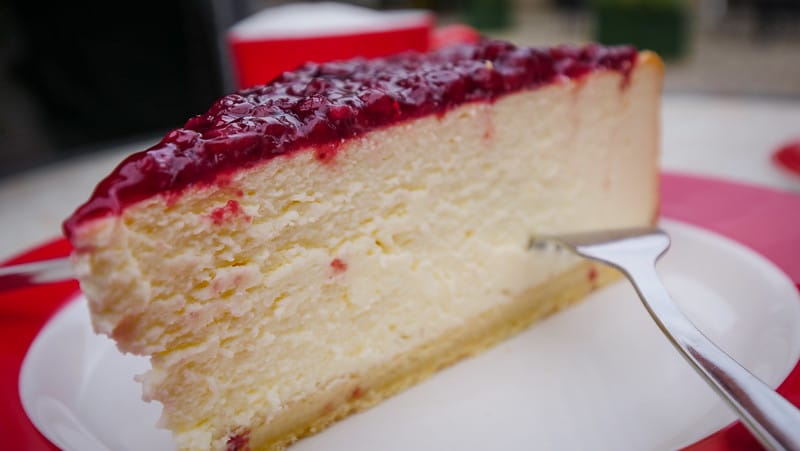
What caught our attention was the variety of cheesecakes they had on offer: mango, blueberry, lemon and thyme, basil, caramel and more. The list was endless. We opted for the mascarpone cheesecake with wild berries which was super creamy.
We also got some cappuccinos to try and beat our jet lag.
Brühl Park
Another thing to do in Quedliburg is to go for a stroll in Brühl Park. This park was just down the street from our hotel, so we made time to visit.
We first enjoyed a walk down Brühlstrasse, which is lined with beautiful mansions and villas. Eventually, we reached the Bode River, where a riverside trail led us to the park.
Brühl Park once formed part of the gardens of the former monastery and is home to a beautiful forest that feels like something out of a fairy tale.
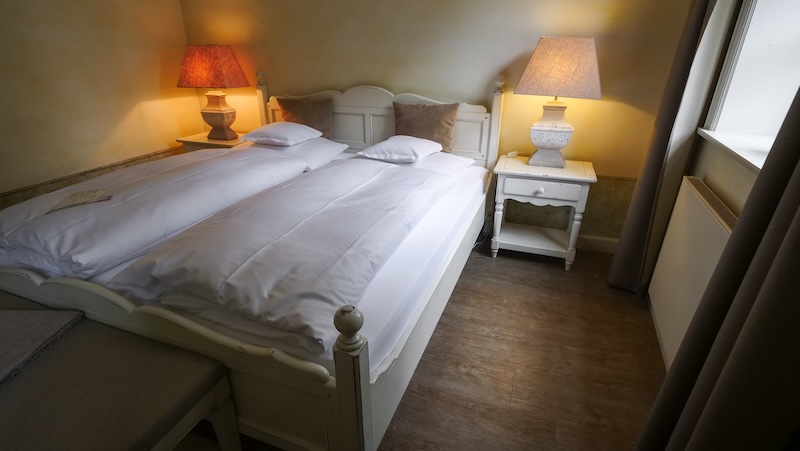
Stay at Romantik Hotel am Brühl
During our visit to Quedlinburg, we stayed at Romantik Hotel am Brühl, a hotel situated just south of Schlossberg just a few minutes from the castle.
This hotel is spread out across a series of restored buildings including a timbered barn that was previously home to a seed-growing company, a palace formerly owned by a distillery, and a barn with Prussian vaulted ceilings.
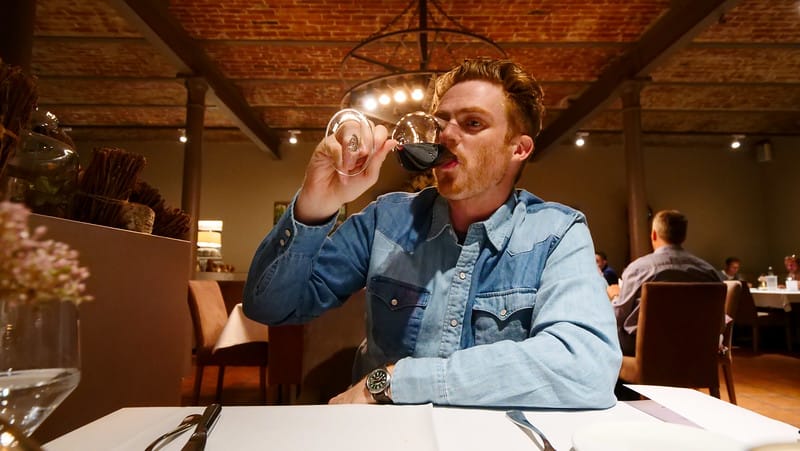
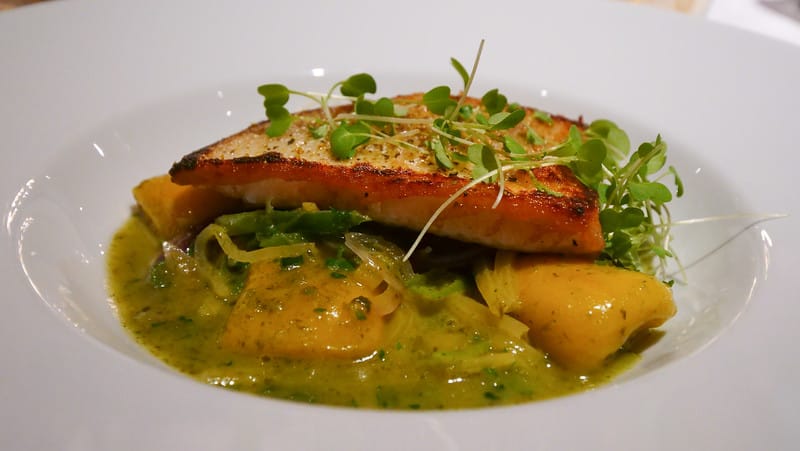
The hotel also has two onsite restaurants: Weinstube which focuses on regional dishes with an haute cuisine twist, and Le Mariage which is a bit more exclusive (it only seats 20 guests who get to enjoy a 7-course meal).
We had dinner at Weinstube one night and enjoyed a lovely meal.
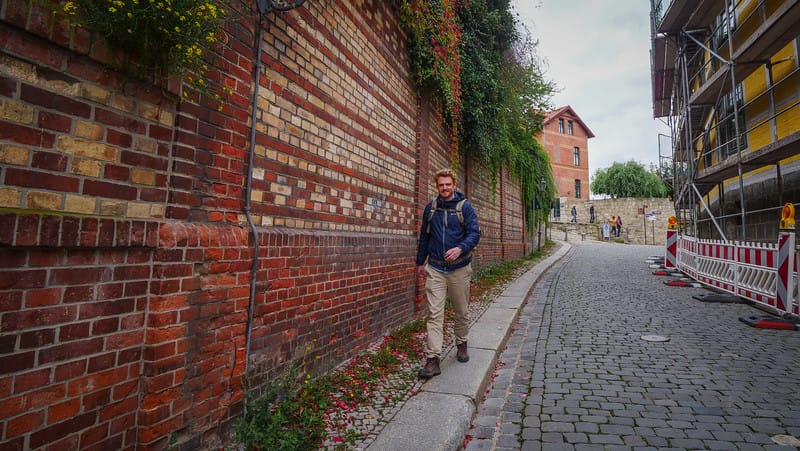
More Things to Do in Quedlinburg: Festivals, Practical Tips & Travel Itinerary Ideas
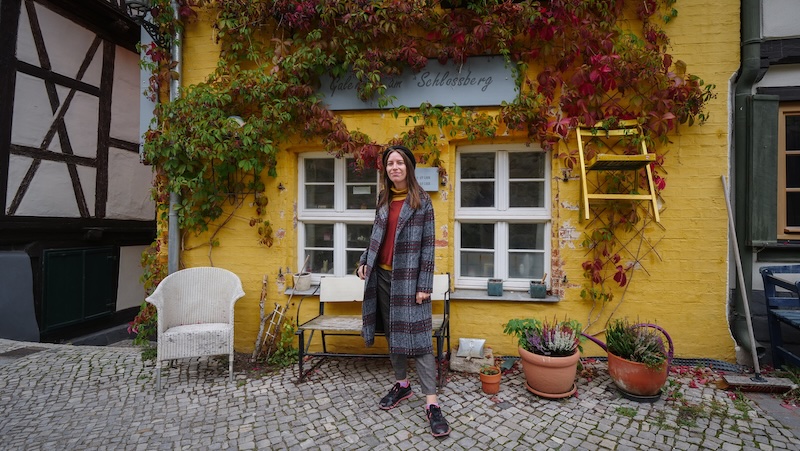
Venture Beyond the Main Square: Hidden Streets & Local Shops
It’s tempting to spend your whole visit wandering the main Markt and Schlossberg, but Quedlinburg’s real magic is found in its side alleys. Get lost on purpose!
- Stroll Münzenberg Quarter: This old hillside neighborhood is a delight—think narrow cobbled lanes, tiny courtyards, and sweeping views back toward the castle. Many of the former monastery buildings have been lovingly restored as artists’ studios and homes. Don’t miss the Münzenberg Museum for a glimpse into daily life here through the centuries.
- Pop into Handwerkergasse: This street is the heart of Quedlinburg’s artisanal revival. Here you’ll find woodworkers, candlemakers, weavers, and bookbinders, many happy to chat and demonstrate their craft. Perfect for a unique, handmade souvenir.
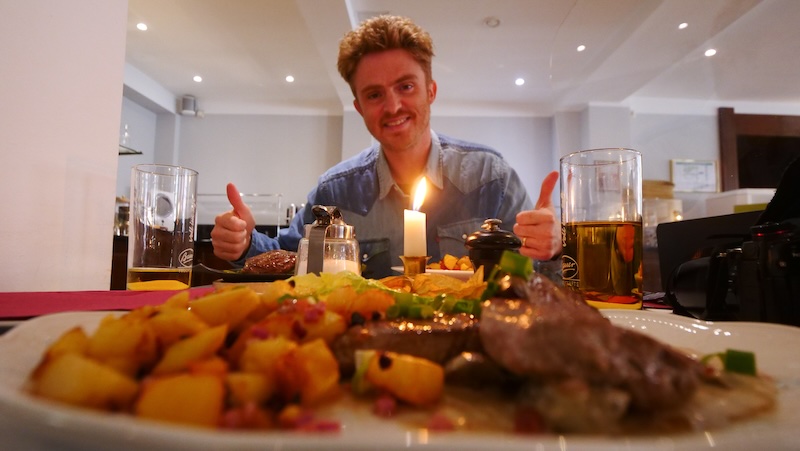
Seasonal Festivals: Celebrate Like a Local
Advent in Quedlinburg
December transforms Quedlinburg into a Christmas wonderland. The entire old town twinkles with fairy lights and the scent of mulled wine, roasted almonds, and gingerbread. The Advent in den Höfen event is especially famous—on each weekend of Advent, dozens of the town’s historic courtyards open to the public, revealing pop-up markets, music, crafts, and even local delicacies you won’t find elsewhere.
Kaiserfrühling (Emperor’s Spring Festival)
Every May, Quedlinburg hosts the Kaiserfrühling, a celebration of spring and the city’s imperial history. Expect costumed processions, medieval music, open-air markets, and plenty of opportunities to try local food and drink.
Musikfestspiele (Music Festival)
In summer, the UNESCO World Heritage site is the atmospheric backdrop for the Musikfestspiele, featuring classical concerts, jazz nights, and experimental performances in churches, courtyards, and gardens. If you’re a music lover, this is a can’t-miss event!
Explore the Harz Mountains: Day Trips & Outdoor Adventures
Quedlinburg is the perfect base for exploring the legendary Harz region—full of enchanted forests, half-ruined castles, and mysterious folklore.
- Take the Harz Narrow Gauge Railway: Ride a steam train through thick forests and over stone viaducts to the summit of Brocken, the highest peak in northern Germany (famous for witches’ legends!). Trains depart from nearby Gernrode or Wernigerode.
- Hike or Bike: Trails crisscross the Harz, from gentle river paths to more rugged mountain treks. Ask at your hotel or the tourist office for route maps. The Ilsetal Valley and Bodetal Gorge are two favorites.
- Visit Wernigerode: A colorful town just half an hour away by train, famous for its own fairy-tale castle and timber-framed old town—plus a lively student vibe.
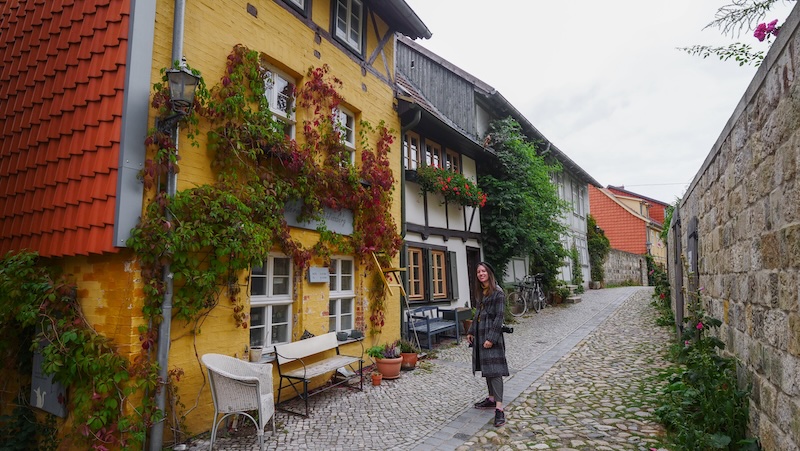
Practical Tips for Your Quedlinburg Visit
- Getting Around: The old town is best explored on foot—wear comfy shoes! If you arrive by car, use one of the town’s designated parking lots just outside the pedestrian area.
- Where to Stay: If you’re after something atmospheric, book a room in a restored timber-frame guesthouse or boutique hotel. Rooms fill up fast in summer and during festivals, so book well ahead.
- Cash is Still King: Many small shops and bakeries in Quedlinburg are cash-only, so bring euros.
- Language: While English is widely spoken in restaurants and hotels, a few German phrases go a long way (and locals will appreciate your effort).
Souvenir Shopping: Take Home a Piece of Quedlinburg
Bring home something special and local! Top ideas include:
- Handmade candles (look for beeswax for that old-world scent)
- Harz Mountain honey and herbal teas
- Locally distilled schnapps (often flavored with wild fruits or herbs)
- Books or art prints featuring Quedlinburg’s picturesque streets
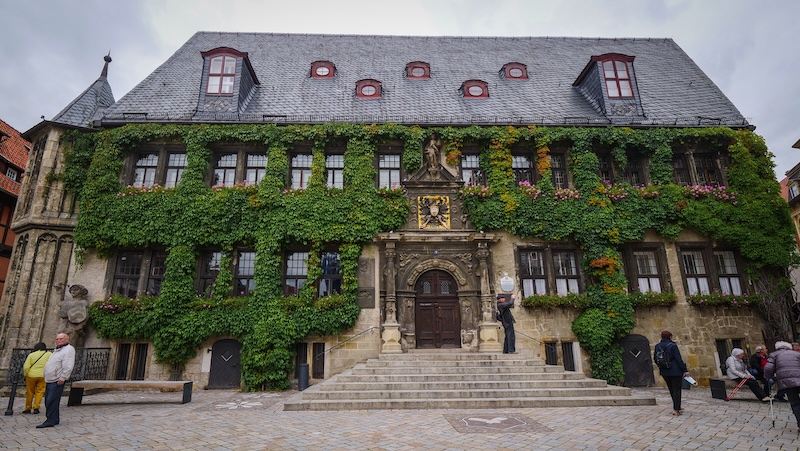
Quedlinburg Travel Itinerary: 2 Day Trip Hour By Hour Trip Ideas
DAY ONE – “Postcard Quedlinburg” Essentials
| Time | Activity | Why It’s Worth Your Morning |
|---|---|---|
| 08:00 | Sunrise at Münzenberg | Five minutes’ uphill from the Marktplatz is Quedlinburg’s former craftsmen’s quarter. Climb the exterior staircase of the Romanesque St. Marienkirche ruin and watch first light creep across a 360-degree roof-scape – prime time for photos before day-trippers arrive. |
| 09:00 | Bakers’ Alley Breakfast | Grab a still-warm Roggenbrötchen (rye bun) from Bäckerei Macheleidt on Blasiistraße and stroll the cobbles with it. Their hazelnut Schnecke is also absurdly good. |
| 10:00–12:30 | Castle & Collegiate Church of St Servatius | Take the guided crypt tour (small extra fee) – our docent pointed out 1,000-year-old fresco pigment still visible by torch-light. Don’t skip the Domschatz upstairs; the 10th-century ivory comb alone is jaw-dropping. |
| 13:00 | Lunch at Brauhaus Lüdde | Settle in under the hop vines and order the seasonal brew. The Lüdde-Schnitzel arrives blanketed in a beer-mushroom sauce and pairs perfectly with their copper-hued Edel-Bock. |
| 14:30–17:00 | Self-guided Half-Timbered Hunt | Pick up the €1 “Fachwerk Map” from the Tourist Office. Must-sees include the Schuhhof courtyard (quirky shoe museum), Weberstraße 23 (narrowest house in town) and the magnificently wonky Wordgasse 3. Duck into the courtyards – many hide miniature herb gardens, artist studios and vintage shops. |
| 17:15 | Finkenherd & The Legend of Henry the Fowler | The tiny square where a bird snared King Henry’s hunting net in 919 AD. There’s a plaque explaining how that moment triggered the founding of the German kingdom. |
| 19:00 | Night-Watchman Tour | Axel the Nachtwächter greets you in cloak and tricorn, lantern in hand. Tales of medieval curfews, plague doctors and, yes, a love-sick pig called Eberhard. Leaves nightly from the Rathaus; reserve a spot in the Tourist Office. Finish with a warming mug of Schierker Feuerstein herbal liqueur. |
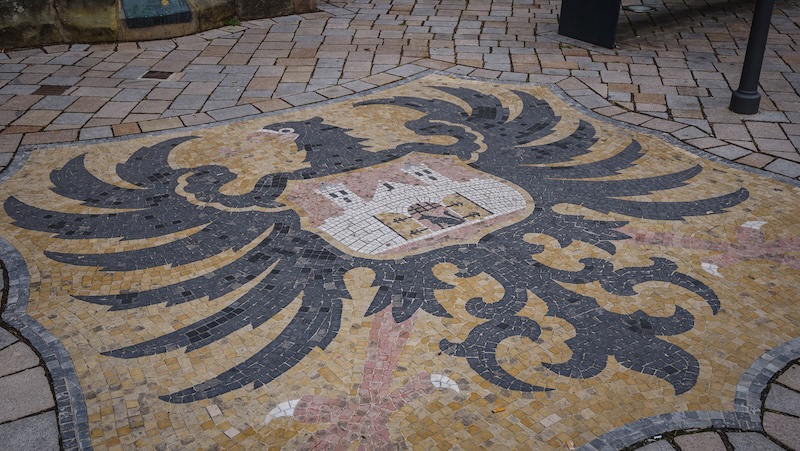
DAY TWO – Beyond the Main Square
| Time | Activity | What Makes It Special |
|---|---|---|
| 09:00 | Lyonel Feininger Cycling Circuit | Rent bikes at Radladen Hoffmann (E-bikes available). Follow sign-posted plaques that replicate 18 of the expressionist’s sketches directly in front of the real-life scenes. A rolling outdoor gallery through meadows and timber-frame hamlets. 18 km loop – allow 2.5 h with photo stops. |
| 11:45 | Quedlinburger Senfladen | Return bikes, then pop into this mustard boutique opposite the Town Hall. Free tastings—from fig-mustard to chilli-honey—plus tiny 50 ml jars that meet carry-on liquid rules. |
| 12:15 | Klopstockhaus | Birthplace of poet Friedrich Gottlieb Klopstock. Even if you’re not into 18th-century odes, the creaking floors and painted beams offer an intimate look at middle-class domestic life. |
| 13:30 | Picnic in Brühlpark | Stock up on cheese (Harzer Roller) and a pretzel at Metzgerei Zimmermann before ambling across the Bode bridge. Locals sunbathe beneath giant plane trees, and in spring carpets of wild garlic perfume the air. |
| 15:00 | Sternkiekerturm | A short woodland path behind Brühlpark climbs to this modern lookout tower. The steel spiral offers another sweeping town panorama – fewer steps than the castle and free entry. |
| 16:00–18:00 | Steam Train to Gernrode | The narrow-gauge Harzer Schmalspurbahn whistles out of Quedlinburg station and puffs 25 minutes through beech forest to Gernrode. Sit in the open balcony carriage, feel the soot on your cheeks and grab a shandy at the tiny station buffet before returning. Trains run roughly every 90 min; check timetable. |
| 18:30 | Dinner at Anno Quedlinburg | Candle-lit medieval tavern serving Flammkuchen, venison stew and home-brewed Met mead in clay mugs. Their “Pfännchen” skillet is enough for two hungry hikers. |
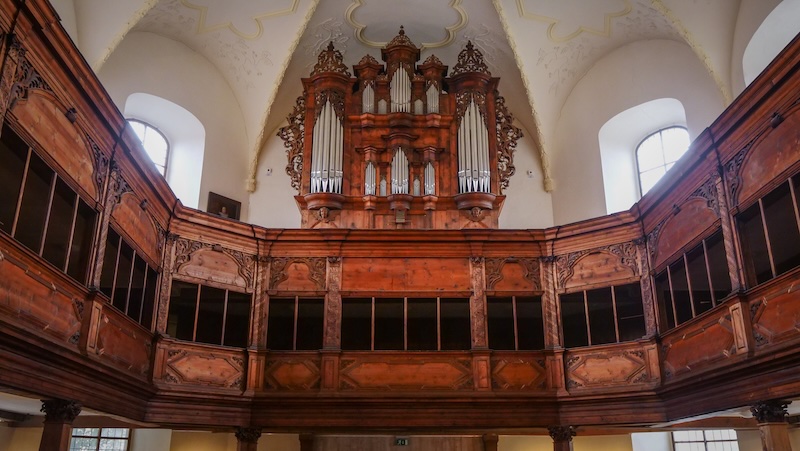
Quedlinburg, Germany — 12-Question FAQ: Half-Timber Icons, Castle & Crypt, Walking Tours, Festivals, Photo Spots, Harz Day Trips, and Practical Tips
Why visit Quedlinburg—what makes it so special?
Quedlinburg is a perfectly preserved medieval town with more than a millennium of history, a skyline of red roofs and spires, and Germany’s largest concentration of half-timbered houses. Its trio of UNESCO-listed stars—Old Town, Quedlinburg Castle, and the Collegiate Church of St. Servatius—make it a dream for architecture lovers, photographers, and slow travelers.
How much time do I need—day trip or overnight?
You can see headline sights in one packed day (castle + church + Old Town), but an overnight lets you linger: add the Timbered Museum, Münzenberg quarter, Brühl Park, a night-watchman tour, and a relaxed dinner. Two days is ideal if you also want a Harz steam-train outing.
What are the absolute “don’t-miss” highlights?
Climb Schlossberg to tour Quedlinburg Castle, visit the Collegiate Church of St. Servatius (including the crypt with royal graves of Henry the Fowler and Queen Mathilde), and sweep the Schlossgarten for rooftop views. In town, wander Marktplatz, Schuhhof, and lanes lined with wildly characterful façades.
How do I get there and get around?
Frequent trains link Quedlinburg to Magdeburg/Halle; from Berlin it’s typically ~2.5–3.5 hours with a change. Driving is easy, with signed parking just outside the pedestrian core. Once here, walk—distances are short—and rent bikes if you want to reach parks or nearby viewpoints.
Where do I see the best half-timbered architecture (and learn how it evolved)?
Start at the Tourist Office for a simple “Fachwerk” map, then trace Poststraße, Wordgasse, and Weberstraße. Drop into the Timbered (Fachwerk) Museum to see early “ständerbau” techniques and how upper stories began to overhang across the centuries—spot the carvings, dates, and painted beams.
Are guided tours worth it—any unique options?
Yes. A daytime architectural walk helps decode details you’d miss, and the lantern-lit Night Watchman tour weaves medieval lore through backstreets after dark—equal parts history lesson and theater.
What (and where) should I eat?
For hearty classics, Hotel zum Bär around the Marktplatz hits the spot; Brauhaus Lüdde pairs local brews with schnitzel and mushroom gravies; Restaurant Weinstube (at Romantik Hotel am Brühl) offers regional dishes with finesse. Dessert is non-negotiable: Café Vincent’s käsekuchen lineup is legendary.
Any great viewpoints and photo tips?
For that storybook panorama, use Schlossgarten or the Koenigskur park edges; at sunrise, climb Münzenberg for a near-360° roofscape. The Sternkiekerturm lookout (behind Brühl Park) gives a fresh angle with fewer steps. Overcast skies make colors pop; rainy cobbles glow at blue hour.
What festivals or seasonal events should I plan around?
December’s Advent in den Höfen opens dozens of private courtyards with crafts, mulled wine, and lights—a true “only here” experience. Spring’s Kaiserfrühling celebrates imperial roots, and summer brings concerts in courtyards and churches across the UNESCO ensemble.
Can I combine Quedlinburg with Harz Mountains adventures?
Absolutely. Ride the Harz Narrow Gauge steam railway from Quedlinburg toward Gernrode/Wernigerode or up to Brocken for misty forest drama. Prefer trails? The Bodetal Gorge and Ilsetal valley hikes are easy day trips.
Practicalities: cash/cards, Sundays, language, and comfort?
Small cafés/shops may be cash-only—carry some euros. Many stores close early or entirely on Sundays. English is commonly understood in hospitality; a few German phrases earn smiles. Wear comfy shoes for cobbles; the Old Town is compact but undulating.
Where should I stay for atmosphere?
Timbered guesthouses and boutique stays abound; Romantik Hotel am Brühl (near Schlossberg) spreads across lovingly restored buildings and hosts two restaurants. Book well ahead for summer weekends and Advent—rooms go fast in this fairy-tale town.
Final Thoughts On Visiting Quedlinburg
Hopefully this gives you an idea of some of the things you can do in Quedlinburg during your visit.
We arrived on an early morning train and then stayed in town for the night, so everything you see here was done with one day in Quedlinburg.
The nice thing about a small, walkable, medieval town is that you can see quite a lot in one day!
If you enjoyed this destination, you may also be interested in visiting the medieval town of Lüneburg that’s famous for salt, exploring Germany’s northernmost wine region of Saale-Unstrut, or going on a Black Forest road trip.

Ah, the simple pleasure of strolling through new destinations, enjoying their history and old buildings.
Audrey, your review has shown that Quedlinburg is a truly picturesque place to visit. It fascinates me that one can explore a significant portion of this small, walkable, medieval town within a single day!
By the way, your photographs are beautiful and enhance the place’s allure, making me even more intrigued and wanting to visit.
Cheers,
Femi.
Really been debating between Quedlinburg, Bamburg or Nuremburg for my extra 3 days after leaving Berlin during my trip in October. Thanks for sharing the details of your visit!